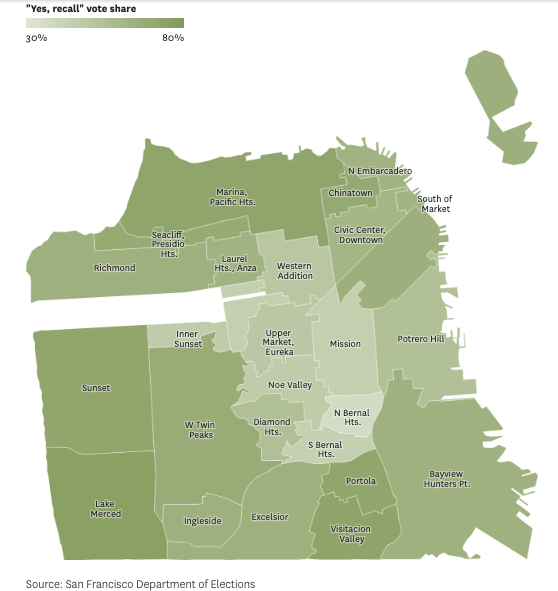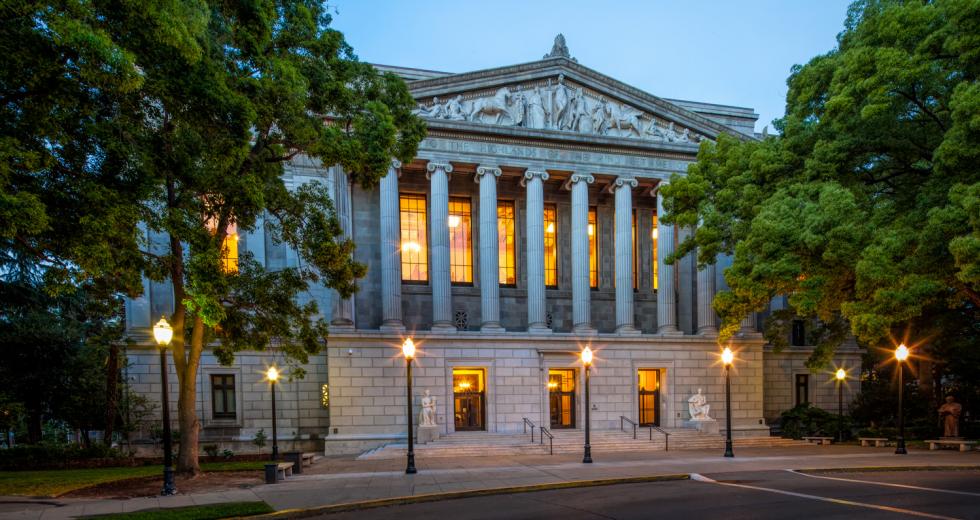Not being on Twitter, while glorious, has its drawbacks; I would not have found out about this story if not for my colleague Paul Belonick, who came upon it through this thread. The story, in essence, is this:
The Sixth Amendment guarantees anyone the right to a speedy trial. What’s unique about this right, as the Supreme Court explained in Barker v. Wingo, is that it is often (though by no means always) in the interest of the defendant to delay matters in court: witnesses could forget and disappear, evidence could be mislaid, etc. But if someone is in pretrial detention, the clock ticks while the person’s ability to plan their defense is hampered. At the same time, speedy trial saves time and makes courts more efficient, and in that respect, it is as much a “right” of the government and the public coffers as it is of the defendant. For this reason, when someone brings a speedy trial motion, the court tallies the delays that are the government’s fault versus those that lie at the door of the defendant. There are official limitations on the time that can pass before a case is brought to trial at both the federal and state levels.
But speedy trial problems can happen at the appellate level, too–especially true for defendants languishing in prison while their appeals are pending. In 2021, well-known appellate attorney Jon Eisenberg decided on an unusual course of action: he sued the Third District Court of Appeal for the delays, framing them as the Court’s failure to comply with ministerial duties. In his petition for a mandamus writ, Eisenberg wrote:
***
Since 2018, the court has denied calendar preference for at least 278 criminal appeals, with cases languishing from 12 to 99 months after being fully briefed. In some cases, the defendants had already served part or all of a reversed prison term or sentence enhancement—an egregious failure of the appellate process. Systemic inordinate delay in adjudicating criminal appeals is unconstitutional—a denial of due process. Where a right of appeal is afforded, the adjudicatory process must be timely. Currently, the Court of Appeal for the Third Appellate District has yet to calendar at least 66 criminal appeals that have been fully briefed for 12 to 41 months. Expeditious action by this Court is essential to protect dozens of inmates who are threatened with irreparable injury—or the worsening of irreparable injury already suffered—from denial of their constitutional right to timely appellate review. This systemic denial of statutory and constitutional rights is a stain on the integrity of California’s appellate process. This Court should not condone it by inaction.
I. CODE OF CIVIL PROCEDURE SECTION 44 GIVES CALENDAR PREFERENCE TO CRIMINAL APPEALS. Code of Civil Procedure section 44 prescribes two forms of priority in calendaring appeals—among civil appeals, and between civil and criminal appeals. First, the statute requires “preference in hearing in the courts of appeal” for probate, contested election and certain defamation cases. Second, prioritized civil appeals must be placed on the calendar “next after cases in which the people of the state are parties.” These provisions have the effect of mandating calendar preference for all criminal appeals. “Adult criminal appeals receive priority because they are cases ‘in which the people of the state are parties.’” Thus, once a criminal appeal is fully briefed, it must be placed on the next available oral argument calendar—which in most Courts of Appeal usually means three or four months later.
II. SYSTEMIC DELAY IN THE CRIMINAL APPELLATE PROCESS IS UNCONSTITUTIONAL. Although there is no federal constitutional right of appeal, “if a State has created appellate courts as ‘an integral part of the … system for finally adjudicating the guilt or innocence of a defendant,’ [citation], the procedures used in deciding appeals must comport with the demands of the Due Process and Equal Protection Clauses of the [U.S.] Constitution.” This means a state’s criminal appellate process must be timely. “[F]ederal courts have held that undue delay in processing an appeal may rise to the level of a violation of due process.” “[A]n appeal that is inordinately delayed is … a ‘meaningless ritual.’”
The Tenth Circuit has enunciated a general rule that delay in adjudicating a noncapital criminal appeal for more than two years after filing of the notice of appeal—including more than 11 months from the completion of briefing to the filing of the opinion—“gives rise to a presumption that the state appellate process is ineffective.” This “rebuttable presumption of prejudice” is applied where “such delays are chronic and systemic and have resulted in the wholesale denial of the right to a reasonably timely appeal.” “Delays of such magnitude produce an unacceptable threat to the integrity of the appellate process.” The most obvious and egregious prejudice from inordinate delay in a criminal appeal occurs when the defendant has already served part or all of a reversed prison term or sentence enhancement—which has happened more than a few times in the Third District. In such instances, the right of appeal is wholly subverted. Prejudice can also occur when delay impairs the defendant’s right to a retrial or resentencing after reversal—for example, due to faded memories or lost evidence. And harm can occur even if a long-delayed appeal eventually proves to be unsuccessful—in the form of emotional damage from the “increased anxiety, mistrust, hopelessness, fear, and depression” that “results from the very thwarting of the hope that liberty will be restored through a right that the State has guaranteed—the appellate process.” The rule should be no different under article I, section 7 of the California Constitution. “[T]he proper and efficient administration of the penal laws of the state, due regard being had to established procedure, demands a speedy resolution of all appeals taken in criminal cases.”
III. THE THIRD DISTRICT IS SYSTEMICALLY DENYING STATUTORY CALENDAR PREFERENCE FOR MANY CRIMINAL APPEALS.
A. Hundreds of Criminal Appeals Have Been Denied
Calendar Preference, With Dozens Yet to be Calendared. Justice Raye was appointed to the Third District in 1991 and became its Administrative Presiding Justice in 2010. His predecessor as Administrative Presiding Justice retired in September 2010. That same month, the Third District commenced a decade-long practice of failing to accord calendar preference to many criminal appeals.1 From September 2010 to March 2012, Justice Raye authored four decisions in criminal appeals with lapses of 17 to 25 months from fully briefed to submission for decision. Thereafter, the number of substantially delayed. Third District criminal appeals steadily rose, 1 Previously, such delay was rare. Petitioner has found only two Third District criminal appeals that were prejudicially delayed during the two years preceding Justice Raye’s appointment as Administrative Presiding Justice. (People v. Petit [18 months from fully briefed to submission for decision; adding 112 days conduct credit after sentence completed]; People v. Garcia [14 months from fully briefed to submission for decision; striking 8-month sentence enhancement after sentence completed].) 19 with longer delays. In 2012–2013, Justice Raye authored 17 decisions in criminal appeals with lapses of 13 to 36 months from fully briefed to submission for decision. By 2018, in cases authored by Justice Raye and other Third District justices, the court was failing to accord calendar preference to dozens of criminal appeals annually, some with extraordinary delays. From 2018 to the present, at least 212 criminal appeals had lapses of 12 to 99 months from fully briefed to submission for decision. Each was calendared months or years after the calendaring of civil appeals that were fully briefed long after those criminal appeals were fully briefed.
Other Third District criminal appeals, however, have been accorded calendar preference. As of this writing, at least 66 fully briefed Third District criminal appeals have yet to be calendared, with lapses of 12 to 41 months from fully briefed to submission for decision. (Eisenberg 2 Petitioner determined the numbers of delayed criminal appeals recounted in this petition by manually reviewing online docket entries for some 20,000 Third District filings. Given the limitations of that methodology, the true numbers are likely higher. The Third District’s internal records can complete the picture. Meanwhile, the Third District continues to calendar civil appeals that have been fully briefed for as few as four to eight months.
B. Calendar Preference Failures Have Prejudiced Many Defendants.
Each of the 278 delayed criminal appeals referenced in this petition exceeds the Harris threshold for the rebuttable presumption of prejudice from unconstitutional delay—more than two years from notice of appeal to filing of opinion, including more than 11 months after completion of briefing. In some of those cases, actual prejudice is demonstrated by the fact that the defendant had already served part or all of a reversed prison term or sentence enhancement by the time of adjudication. For example: This despite the fact that, according to the Third District’s clerk/executive officer, “‘tentative opinions have already been prepared’” in many of those cases.
The Third District has also failed to accord calendar preference to some probate appeals, as Code of Civil Procedure section 44 also requires. [docket entries for four probate appeals with 17 to 21 months from case fully briefed to submission for decision].)
• In People v. Kalac [16 months from fully briefed to submission for decision], the Third District struck a one-year sentence enhancement only after it had been served. The People had conceded the point from the outset.
• In People v. Speegle [53 months from fully briefed to dismissal of appeal], the Third District dismissed as moot the defendant’s appeal from an order denying his transfer out of Napa State Hospital for outpatient treatment—because he had completed his seven-year commitment pending the appeal.
• In People v. Weathers [41 months from fully briefed to submission for decision], the Third District struck a partially served 10-year sentence enhancement. Again, the People had conceded the point. Weathers is especially noteworthy because, by contrast, in an almost simultaneously filed appeal presenting the same conceded issue, a different Third District panel ruled just 81 days after the concession, thus giving that defendant the benefit of the court’s decision.
• In People v. Wrobel [52 months from fully briefed to submission for decision], the Third District reversed a 44-month prison sentence and remanded for misdemeanor sentencing only after the defendant had completed the sentence.
• In People v. Johnson [24 months from fully briefed to submission for decision], the Third District struck an already served five-year sentence enhancement.
• In People v. Kent [78 months from fully briefed to submission for decision], the Third District struck an already served eight-month sentence enhancement.
The extraordinary delay in these cases, resulting in defendants having served part or all of a wrongly imposed sentence, is an egregious failure of the appellate process.
C. These Systemic Failures Were Presaged.
These systemic failures of calendar preference for Third District criminal appeals may lack bad intent, but they have effectively operated to implement a proposal the Legislature 23 rejected four decades ago—that in criminal cases there should be no absolute right of appeal at all, much less calendar preference. In 1979, this Court held that the Court of Appeal may not summarily affirm a criminal conviction without full briefing and the right to oral argument, as guaranteed by statute and the California Constitution. In 1981, Justice Raye, at the time Senior Assistant Attorney General for Legislative Affairs, urged the Legislature to supersede Brigham, testifying in support of a bill the Attorney General’s office was sponsoring—Senate Bill No. 1197—which would have eliminated appeals as a matter of right in criminal cases and made criminal appellate review conditioned on the trial judge’s discretionary issuance of a “certificate of appeal.” The bill failed. Immediately before Justice Raye’s testimony, Court of Appeal Justice Winslow Christian testified in opposition to summary affirmance of criminal convictions and urged the Legislature not to alter the statutory calendar preference for criminal appeals, stating: “[T]hat’s a priority that I think is sound. It should not be changed.” Justice Raye then testified:
• “[W]e think there should be some limitation on the right to appeal in consideration of the fact that over 90 percent of criminal appeals result in affirmance and a substantial number of that 90 percent could be characterized as frivolous appeals.”
• Under proposed Senate Bill No. 1197, “[a]ppeal would be only by a certificate of appeal granted by a trial court… Another proposal that we’re considering is vesting discretion not with the trial court but with the court of appeal to decide whether an appeal, on its face, presents substantial issues that warrant consideration by a panel [of] the court of appeal … and the court of appeal would have discretion to refuse to entertain an appeal.”
• “We think this Committee should consider a procedure whereby our office on behalf of the people can move for [summary affirmance] of appeals filed with the court of appeal. We attempted to do this under existing law about three years ago and regrettably the Supreme Court ruled the procedure … improper as not being authorized and in fact being at odds with court rules and with statute … The case name is People v. Brigham.”
A month before this legislative hearing, Justice Raye wrote to members of the Senate opposing an ultimately successful bill to increase the number of Court of Appeal justices statewide. Justice Raye argued that “the more appropriate remedy is to curtail the filing of the frivolous appeal” and “[t]he Courts of Appeal must also become selective in the cases they hear.” During Justice Raye’s tenure as Administrative Presiding Justice, the Third District has only selectively complied with Code of Civil Procedure section 44, thus effectively undermining Brigham by withholding meaningful appellate review in many criminal appeals—sometimes with serious consequences.
IV. MANDATE LIES TO COMPEL STATUTORY COMPLIANCE.
This Court has original jurisdiction to adjudicate this petition. Under such jurisdiction, mandate lies to compel public entities and officers to perform ministerial duties. A ministerial duty may be created “either by statute or by constitutional compulsion.” “A ministerial act is an act that a public officer is required to perform in a prescribed manner in obedience to the mandate of legal authority and without regard to his own judgment or opinion concerning such act’s propriety or impropriety, when a 26 given state of facts exists.’” The statutory duty of appellate courts to accord calendar preference to every criminal appeal is plainly ministerial. The “act” they are “required to perform in a prescribed manner” is to put fully briefed criminal appeals on the next available calendar. The “given state of facts” (ibid.) is a criminal appeal having become fully briefed. Code of Civil Procedure section 44 affords no discretion “concerning such act’s propriety or impropriety.” The gravity of the Third District’s mismanagement of its criminal docket amply justifies exercise of this Court’s original jurisdiction to compel compliance with Code of Civil Procedure section 44. Expeditious restoration of statutorily mandated calendar preference for all Third District criminal appeals is essential to protect dozens of inmates currently facing irreparable injury—or the worsening of irreparable injury already suffered— from denial of their constitutional right to timely appellate review.
***
The California Supreme Court formally denied Eisenberg’s petition, but wrote:
***
We recommend that within 180 days of this order, the Judicial Council complete an investigation of alleged delays in the Third District Court of Appeal’s disposition of criminal appeals and, if appropriate, propose measures that the Judicial Council and the Court of Appeal should employ to address any problems that are identified.
***
As a consequence of the investigation, three appellate judges resigned (see here, here, and here.)







